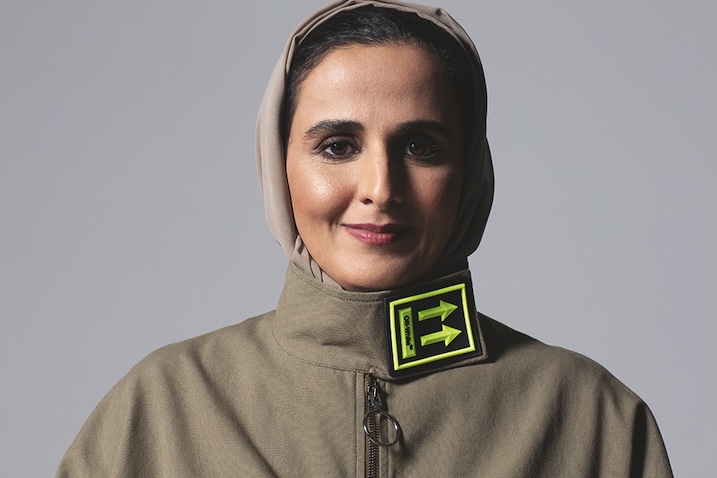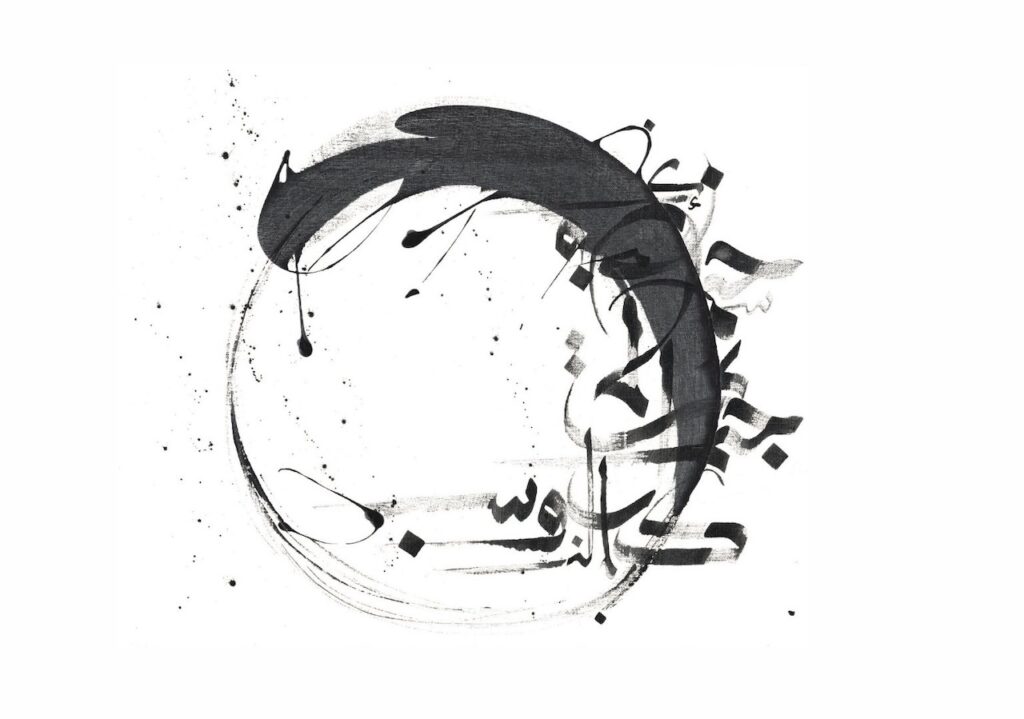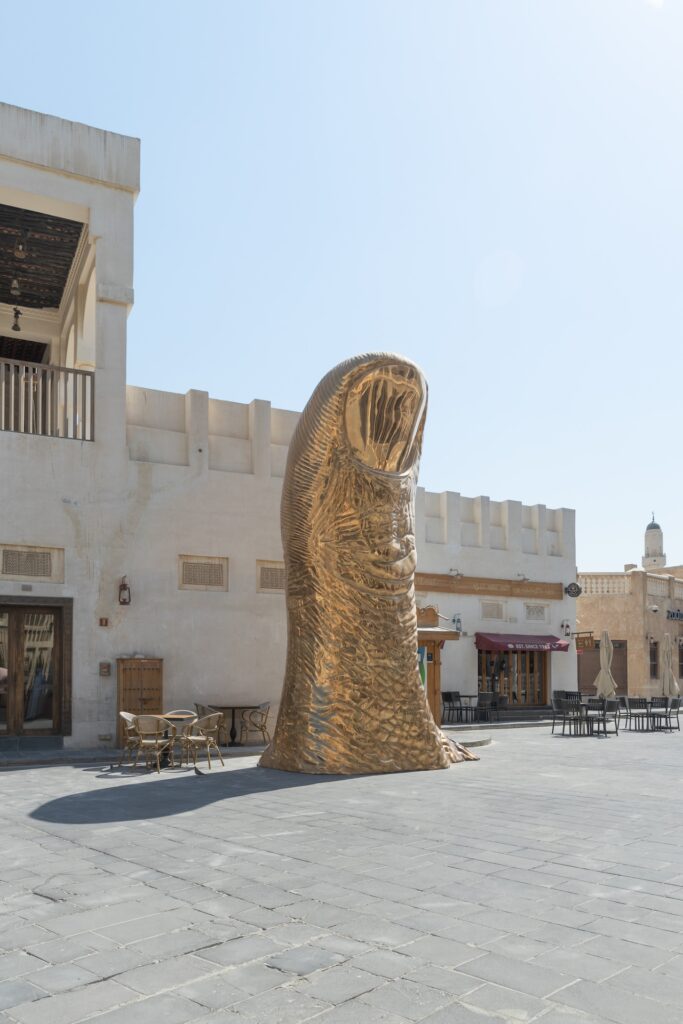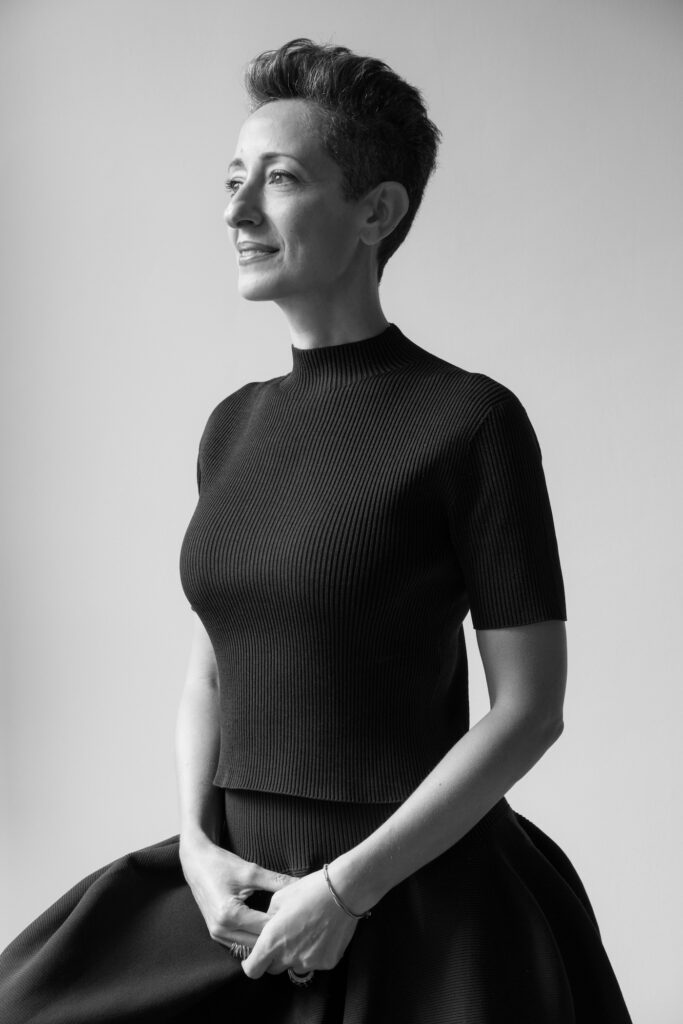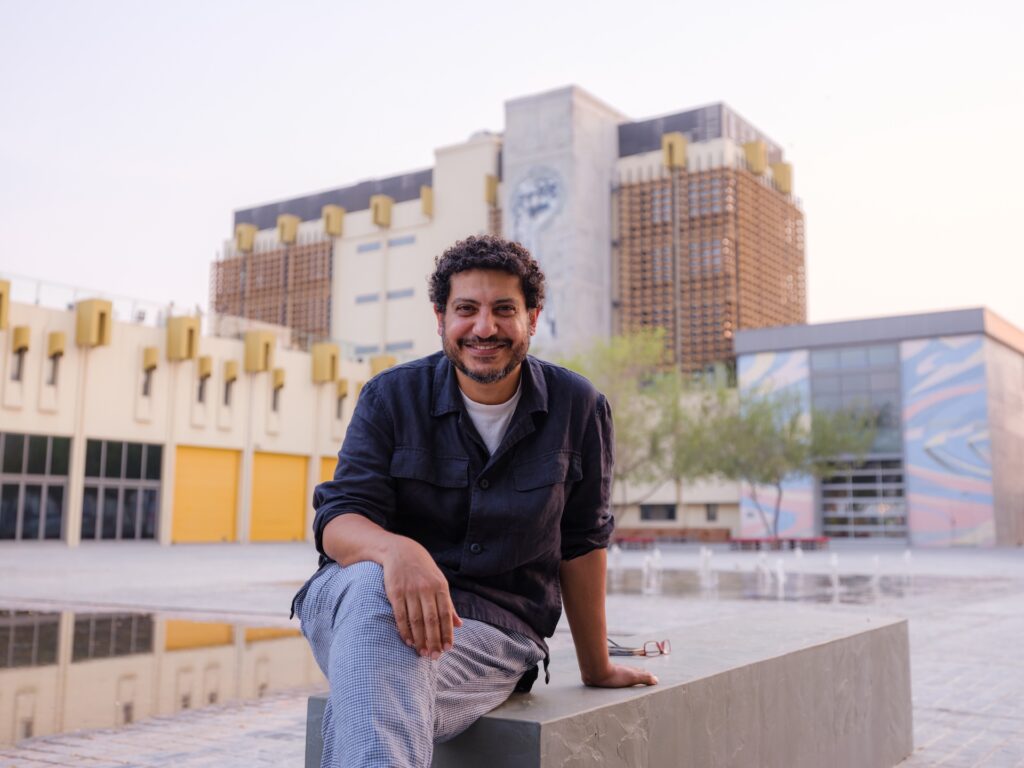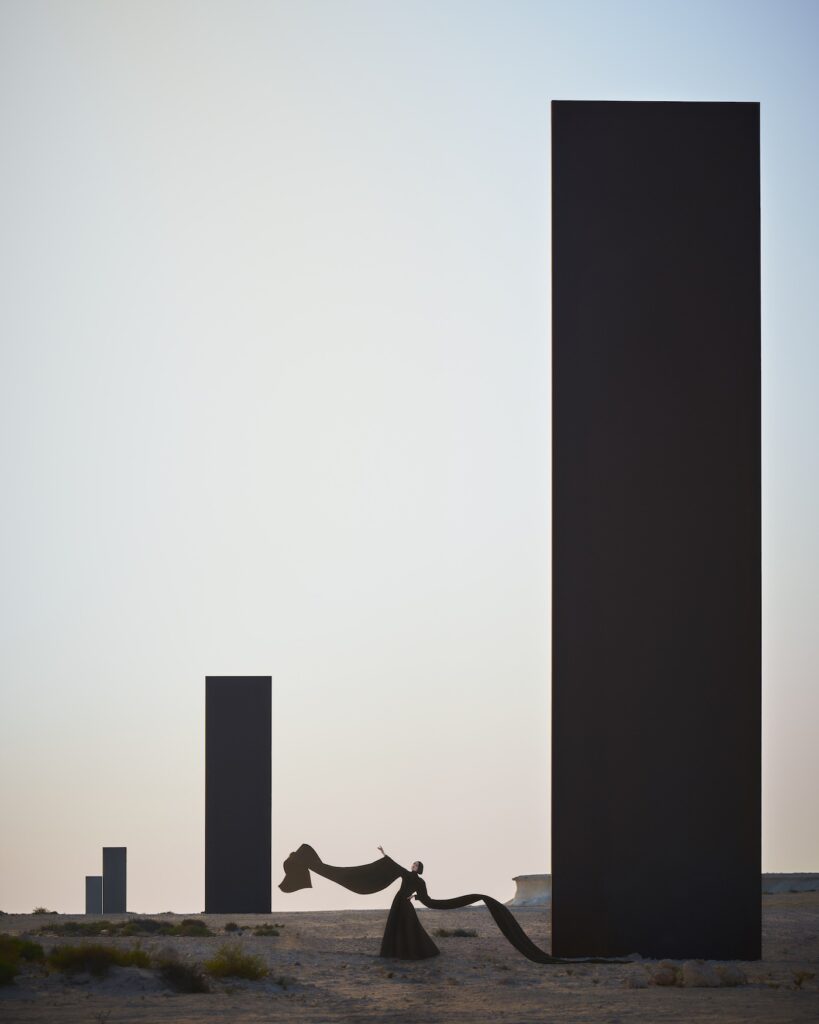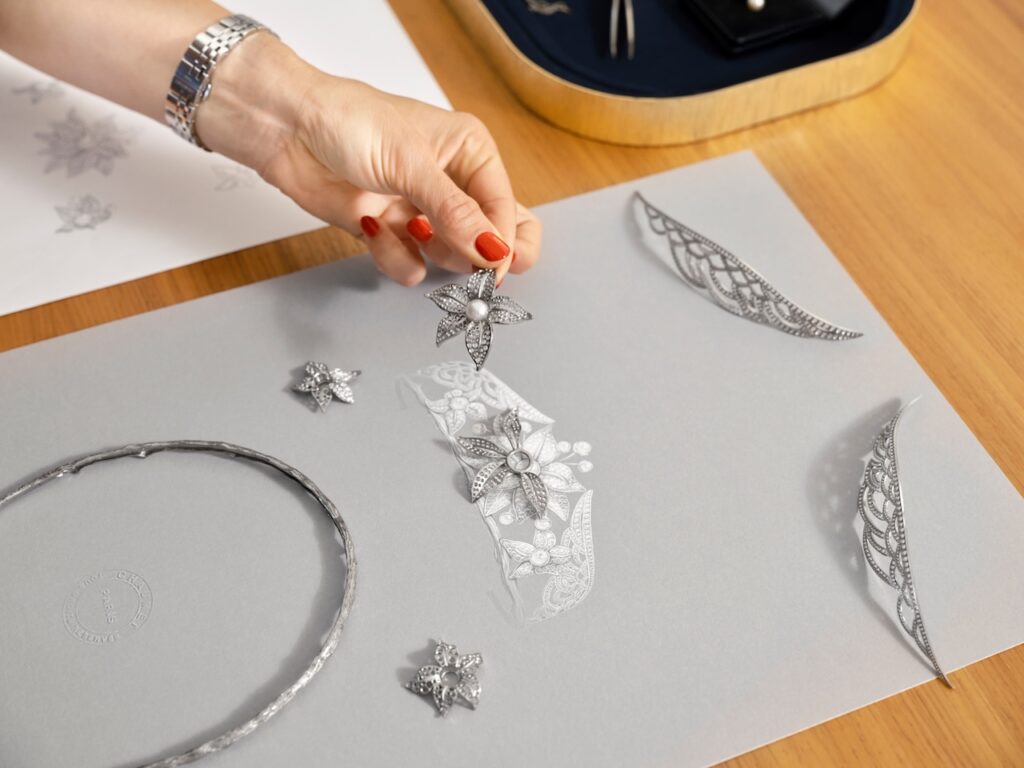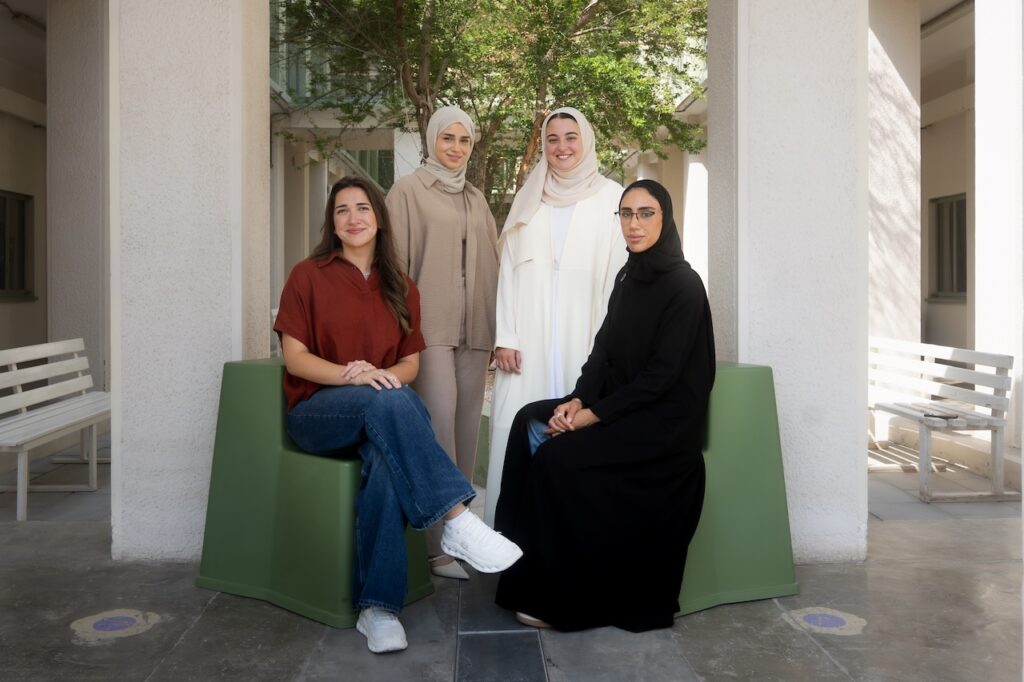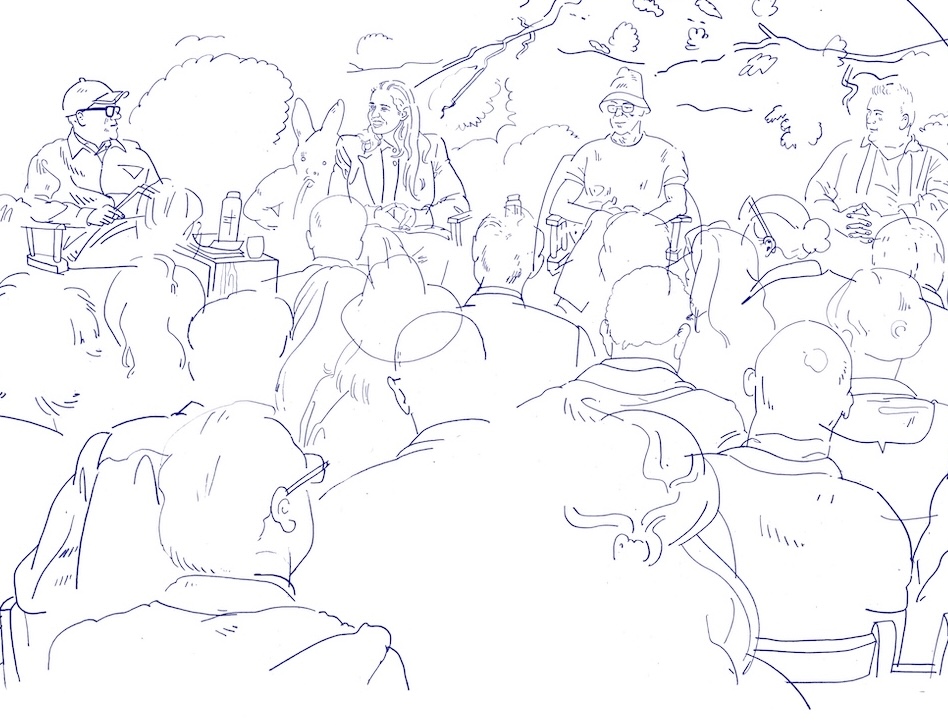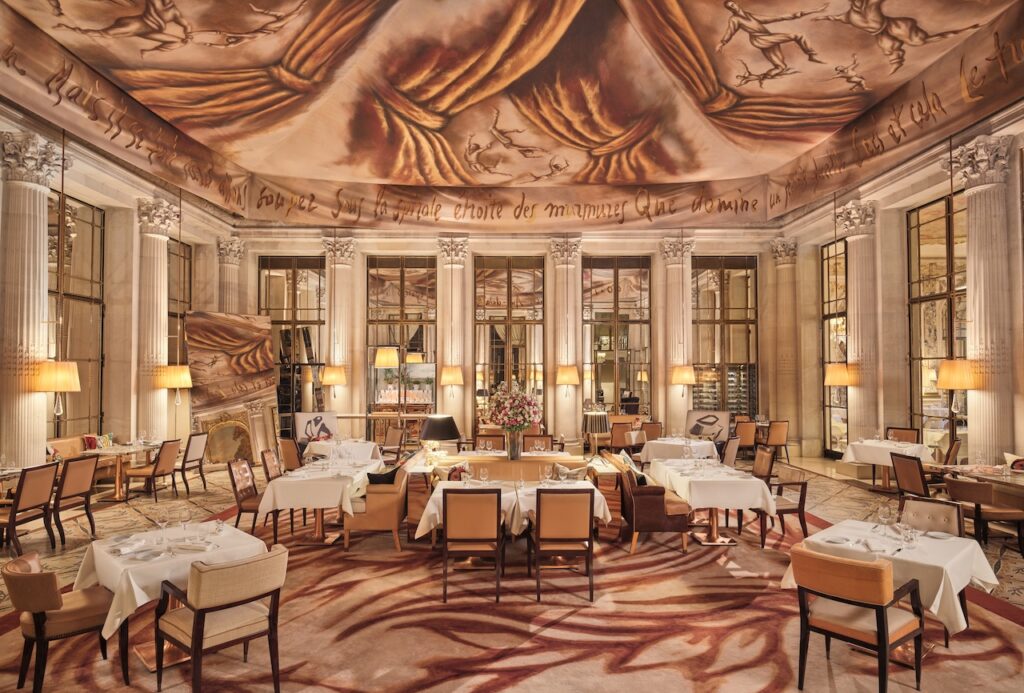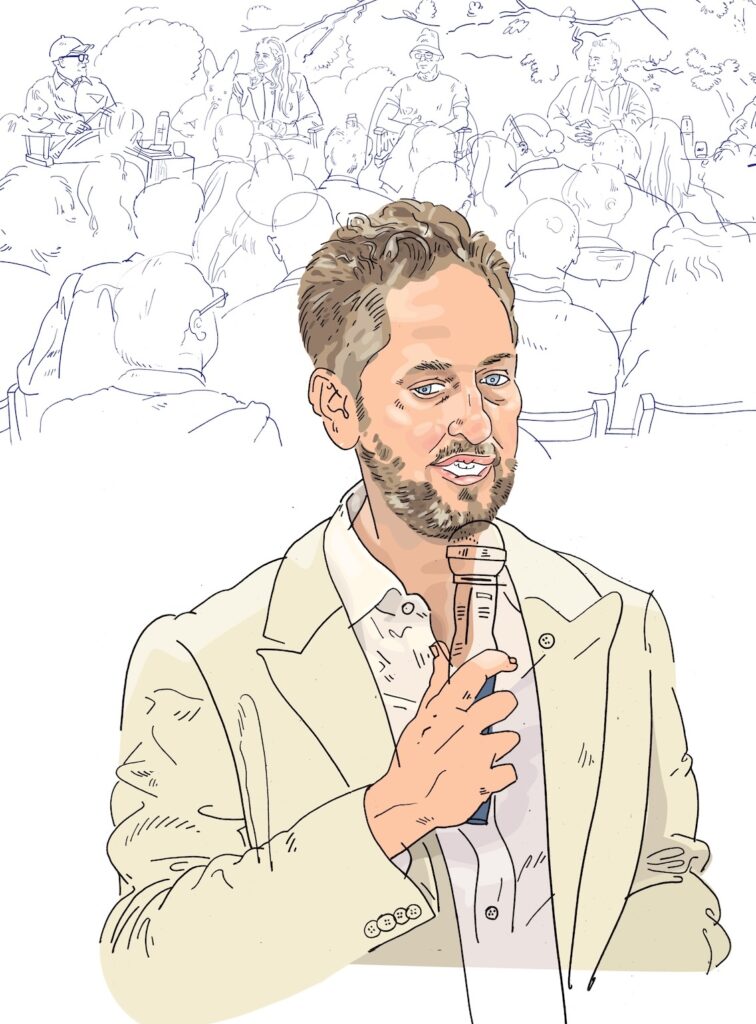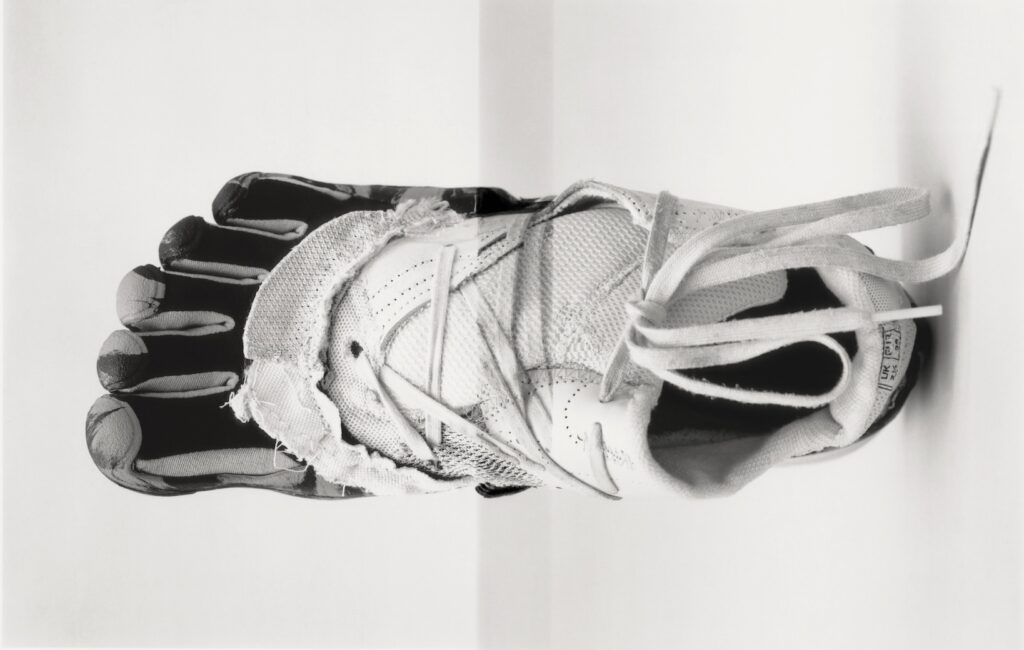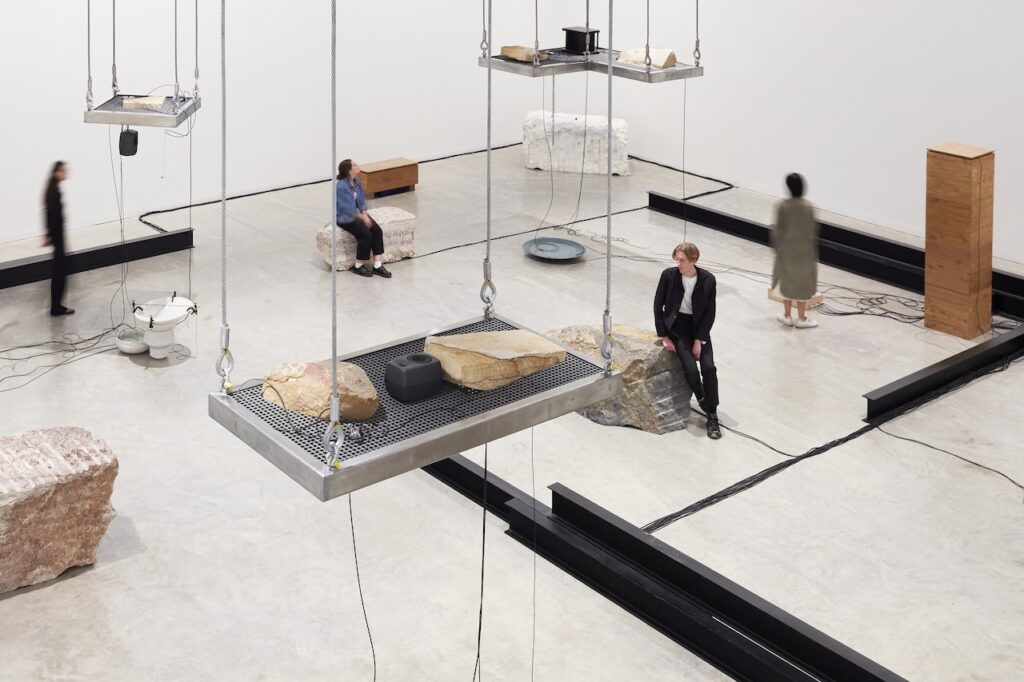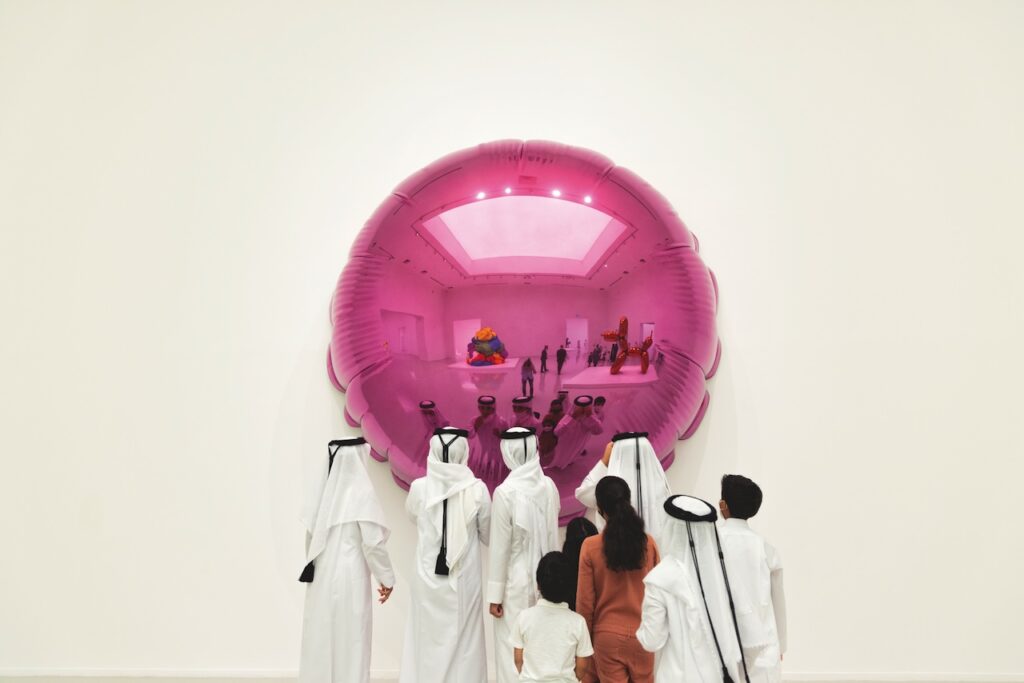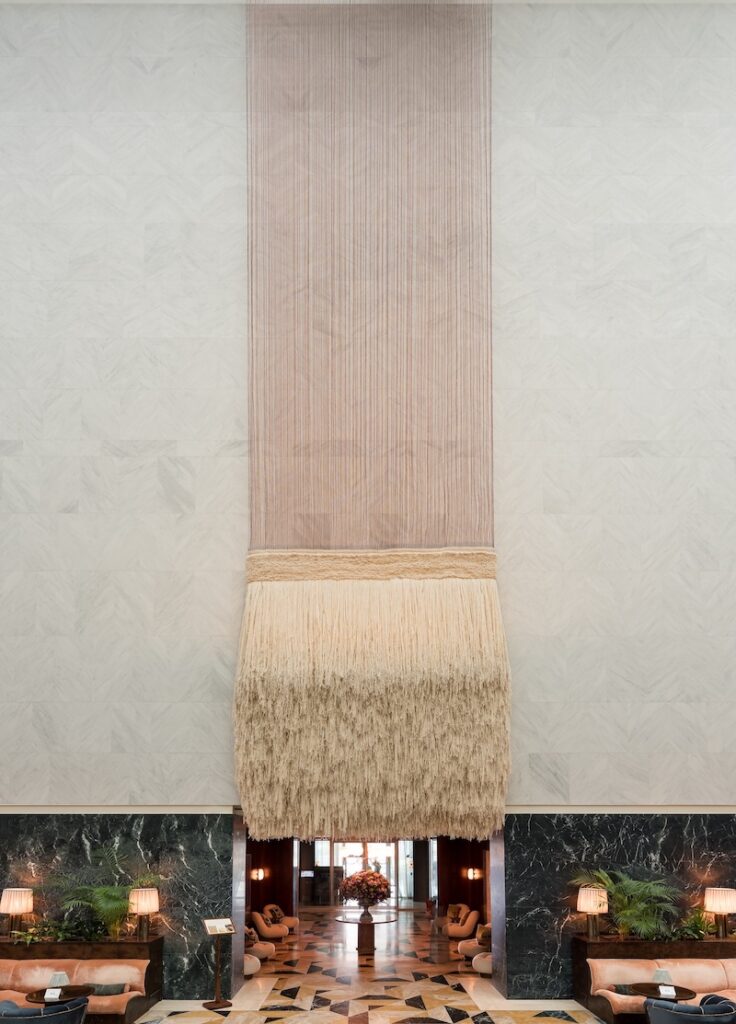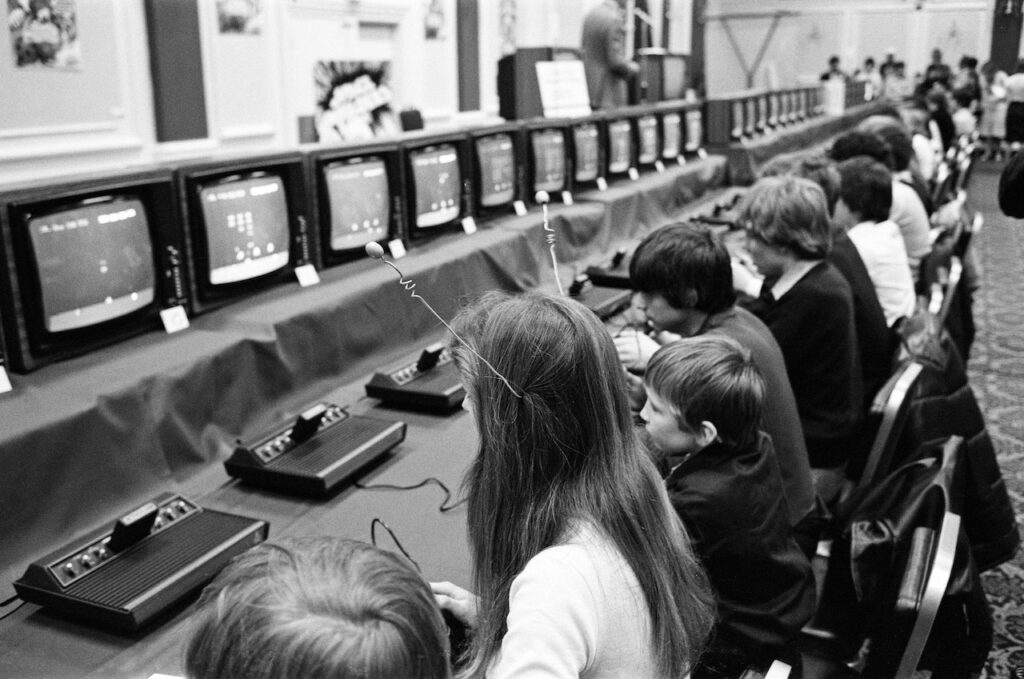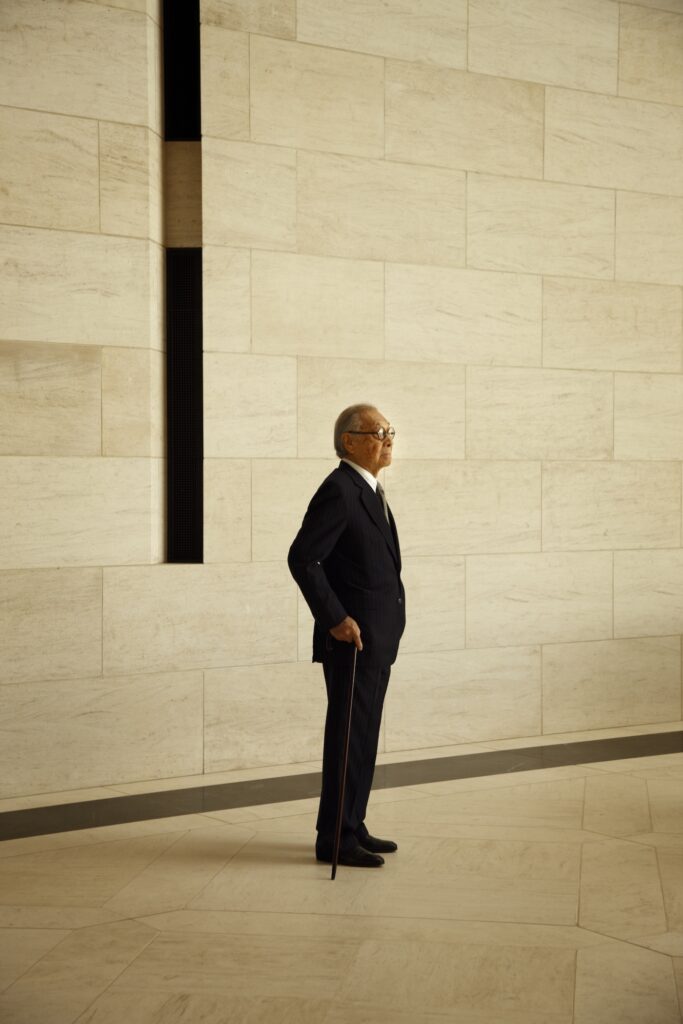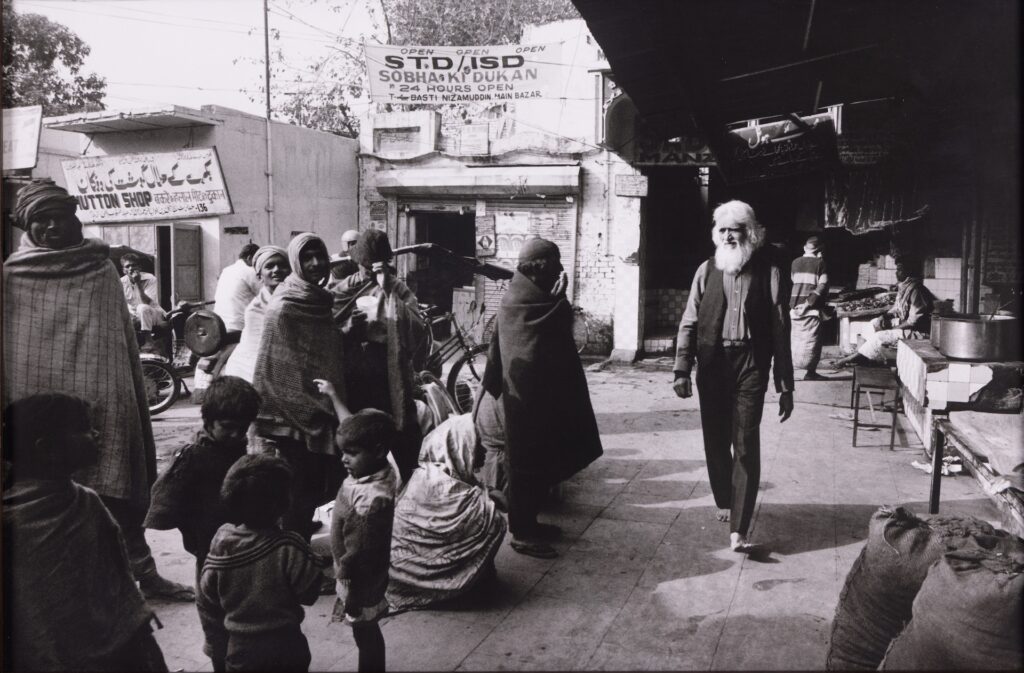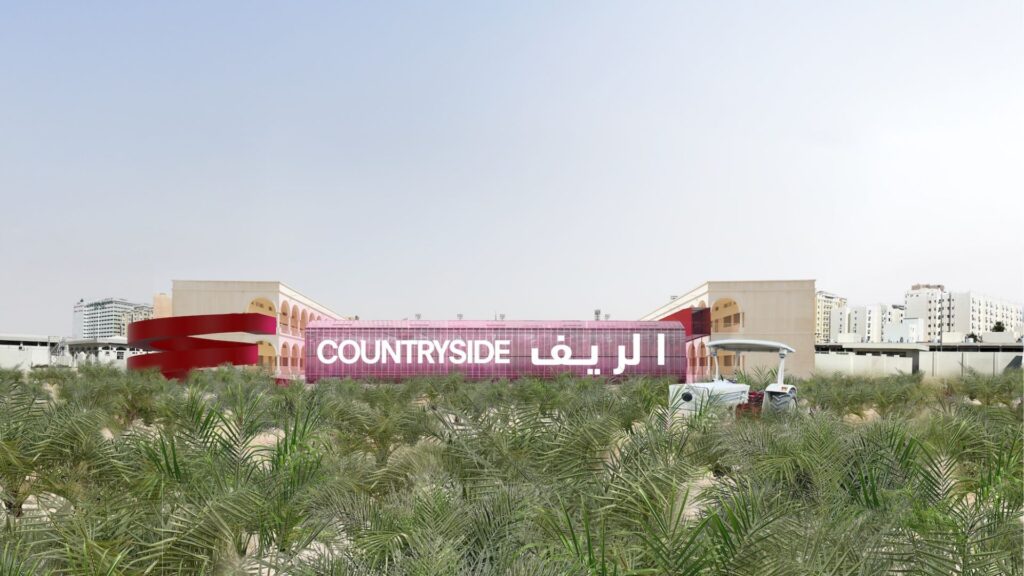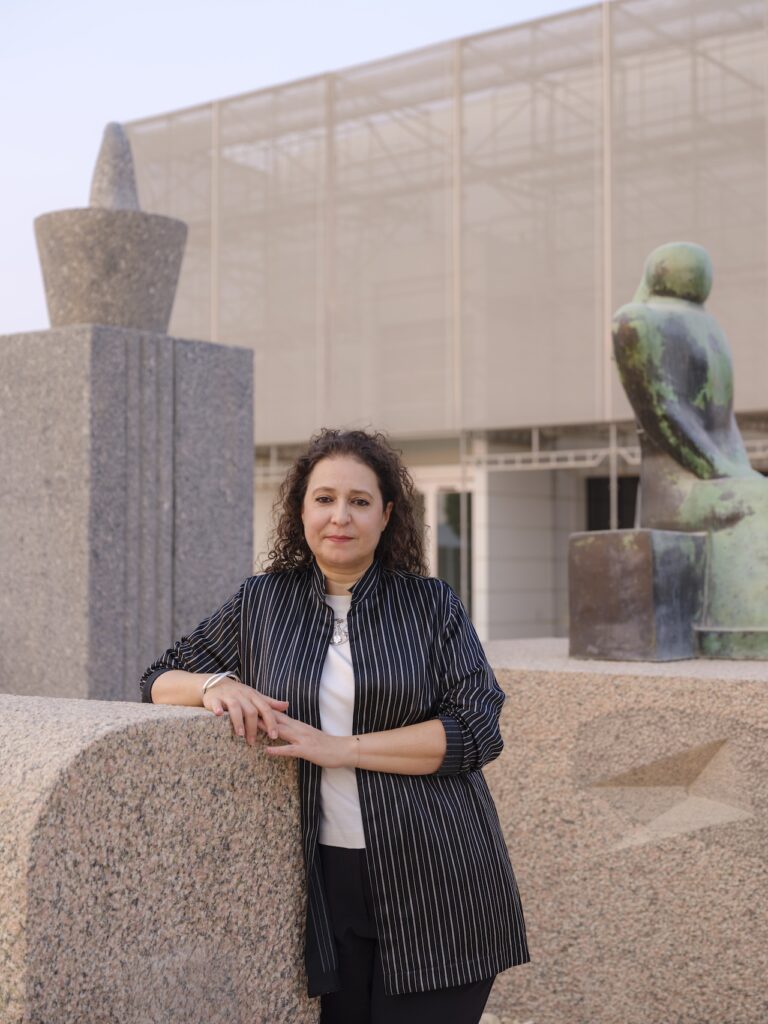Fashion Trust Arabia:
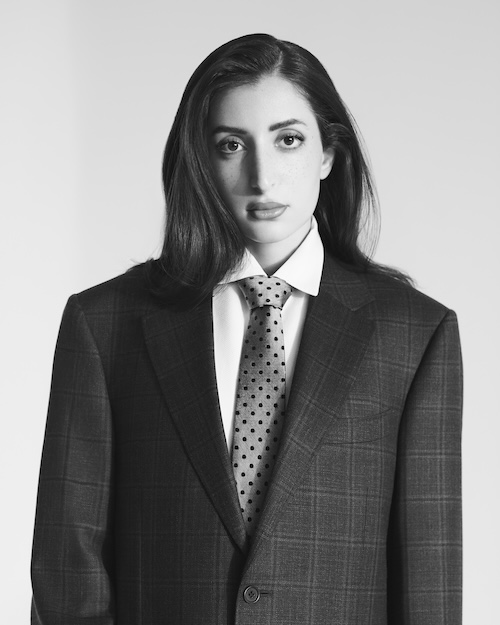
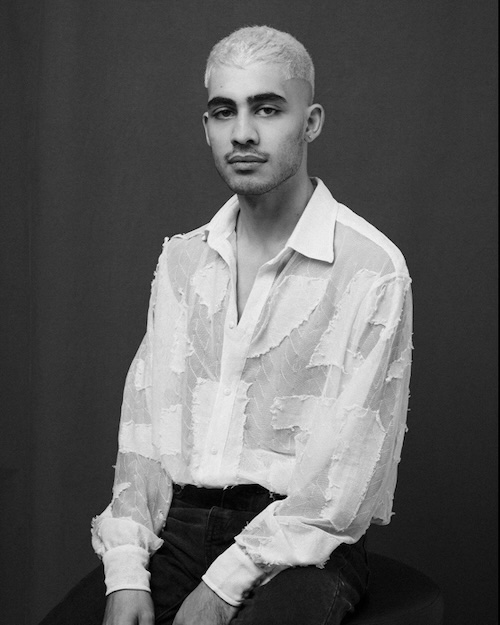

The new guard
YASMIN MANSOUR | AMIR AL KASM | RONI HELOU
Fashion Trust Arabia (FTA) is empowering a fresh generation of Arab designers to define a bold new future for fashion in the region. As it marks its seventh anniversary, a landmark exhibition is celebrating the impact of the designers who have won a coveted FTA Prize
Words Mandi Keighran



The new guard
YASMIN MANSOUR | AMIR AL KASM | RONI HELOU
Fashion has never been only about style. At its most compelling it expresses identity, sparks dialogue, connects cultures and comments on the world around it. For FTA, a non-profit organisation based in Qatar – launched in 2018 under the patronage of Her Highness Sheikha Moza bint Nasser, with co-chairs Her Excellency Sheikha al-Mayassa bint Hamad bin Khalifa Al Thani and Lebanese fashion writer Tania Fares – helping designers to create work with depth and purpose is at the heart of its mission.
Over the past seven years, FTA has played a pivotal role in nurturing designers from the Middle East and North Africa (MENA) region who, between them, are helping shape a new narrative for Arab fashion. One of its key initiatives is the prestigious FTA Prize – the first of its kind in the Arab world. The prize is awarded to designers across seven different categories, from eveningwear and ready-to-wear to fashion tech.
“Fashion Trust Arabia is all about shedding light on designers from the MENA region and giving them the support they need to grow,” explains Dana Nassour Khairallah, director of content at FTA. “It’s not just about handing out an award. When a designer wins, they get plugged into this amazing mentorship programme. It connects them with industry experts and a supportive network of creatives, judges, advisory board members, retail partners and past winners who lift each other up and collaborate. It’s like a family that keeps growing every year.”
“Fashion Trust Arabia is all about shedding light on designers from the MENA region and giving them the support they need to grow”
Dana Nassour Khairallah
This vital support has helped designers from the region make significant strides – securing placements in global stores, showing at major fashion weeks and, more importantly, building businesses with international reach to celebrate the diversity and richness of the Arab world. “There’s no expectation to fit into a mould,” says Khairallah. “The designers we support often have deep cultural roots – whether in their techniques or design language – and our role is to help them evolve on their own terms.”
The FTA Prize is also evolving. Last year, for example, saw the introduction of the Fashion Tech category, which recognises designers working with wearable technology, smart fabrics, cutting-edge innovations and even biofabrication. The inaugural prize was won by Batoul Al Rashdan of Studio BOR, who is renowned for her use of materials derived from food waste and the application of advanced technologies such as 3D printing, robotics and parametric design.
Sustainability is another area that has become an increasing priority over the years, and FTA champions designers such as Mohamed Benchellal (see our feature The Couture Sculptor), who works with deadstock fabrics, and Amir Al Kasm, who creates upcycled clothes. It also mentors new talent on how to incorporate sustainable principles into their work. In 2024, for example, FTA collaborated with the United Nations Environment Programme regional office on a two-day sustainability workshop for winners led by industry experts from Dior and Stella McCartney.
In October, the transformative impact of FTA will be marked with an exhibition, FTA: Threads of Impact. Celebrating 7 Years of Fashion Trust Arabia, at the M7 creative hub in Doha. This landmark show will explore how the designers FTA has supported over the years are defining a bold future for Arab fashion, from traditional craftsmanship and visual storytelling to cutting-edge silhouettes and experimental techniques.
“One of the biggest impacts FTA has had is that it’s completely shifted how people see talent from the MENA region,” says Khairallah. “Before, a lot of amazing designers were almost flying under the radar – the creativity was always there but they weren’t getting the spotlight or access they deserved. FTA helped change that.”
Yasmin Mansour
Yasmin Mansour is a Qatari-Egyptian designer who launched one of the first luxury womenswear labels in Qatar. Since founding her brand in 2014, she has become known for sculptural, one-of-a-kind pieces that blend contemporary silhouettes with Arab cultural references. She was awarded the FTA Eveningwear Prize in 2024.
“My brand began as a personal project. I was creating things I couldn’t find anywhere else, and that grew into making custom pieces for friends and family and then into a more defined brand. In 2020, during the pandemic, I shifted into a new phase, when I began to focus on sustainability and explore accessories and ready-to-wear.
“It’s exciting to be part of a generation that’s helping to push Arab design onto a more global stage – especially being based in Qatar, where there’s so much cultural depth and creative talent. What’s always inspired me about being based here is the duality – traditional craftsmanship and a strong connection to heritage exists with bold architecture and a real sense of futurism. My Egyptian background also plays a major role in shaping how I understand beauty and symbolism.
“Winning the Fashion Trust Arabia award in 2024 was a major milestone for me. Beyond the valuable recognition, FTA offered real support, including placement in prestigious retail spaces such as Harrods and Ounass [a leading luxury retail site in the Middle East]. This brought my work to a global stage and positioned the brand in a much bigger conversation.
“The fashion scene in Qatar is still quite young – especially when it comes to brands looking beyond the local market. Most design here has traditionally focused on local wear, and there haven’t been many labels with international recognition. But that’s really starting to shift. We’re seeing more creatives experimenting and developing a more global mindset. The infrastructure here is also growing, thanks to support from organisations such as FTA and a growing appetite for something new.
“I’ve always seen my brand as part of something bigger, and want to help expand what’s possible for creatives from this region. We have worked hard to shift understanding of what is possible, from staging events in Paris to becoming the first Egyptian designer and Qatari-based brand selected for the LVMH Prize. I want to show that there’s talent here and that the region has something powerful to say.”
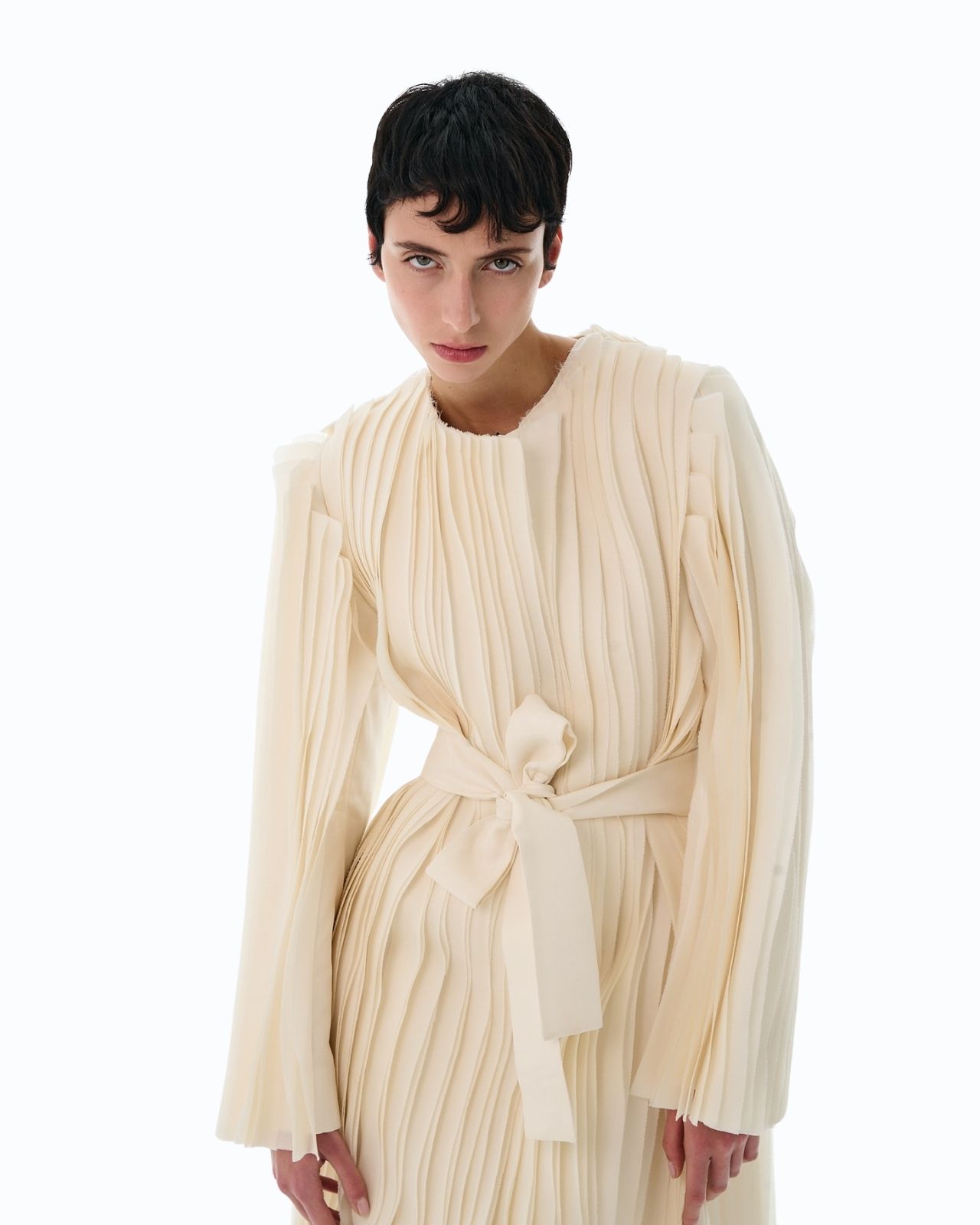
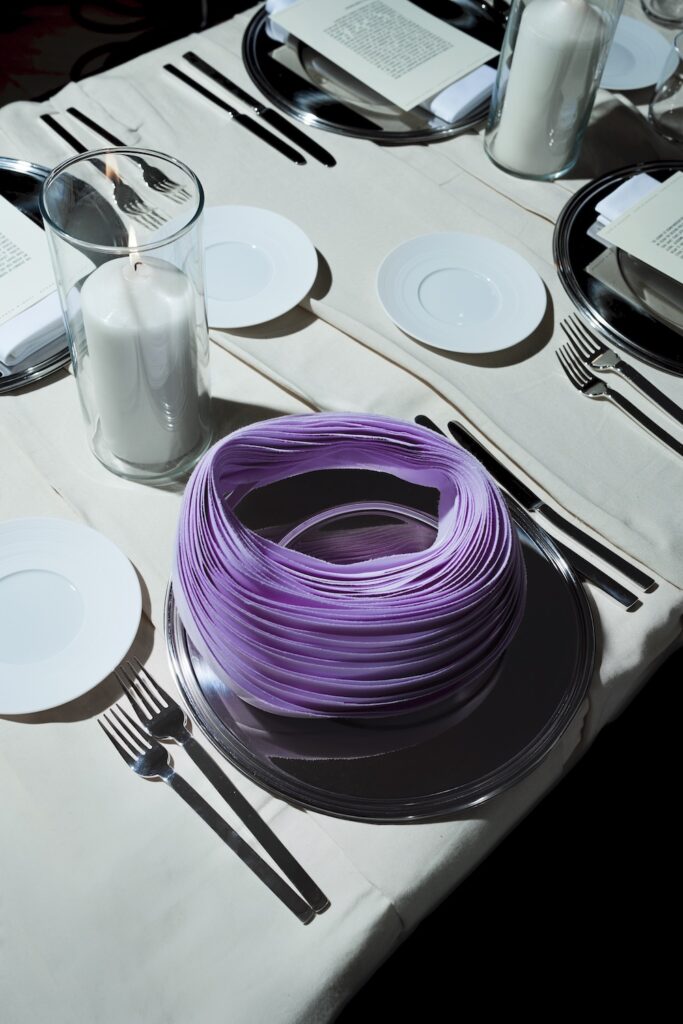
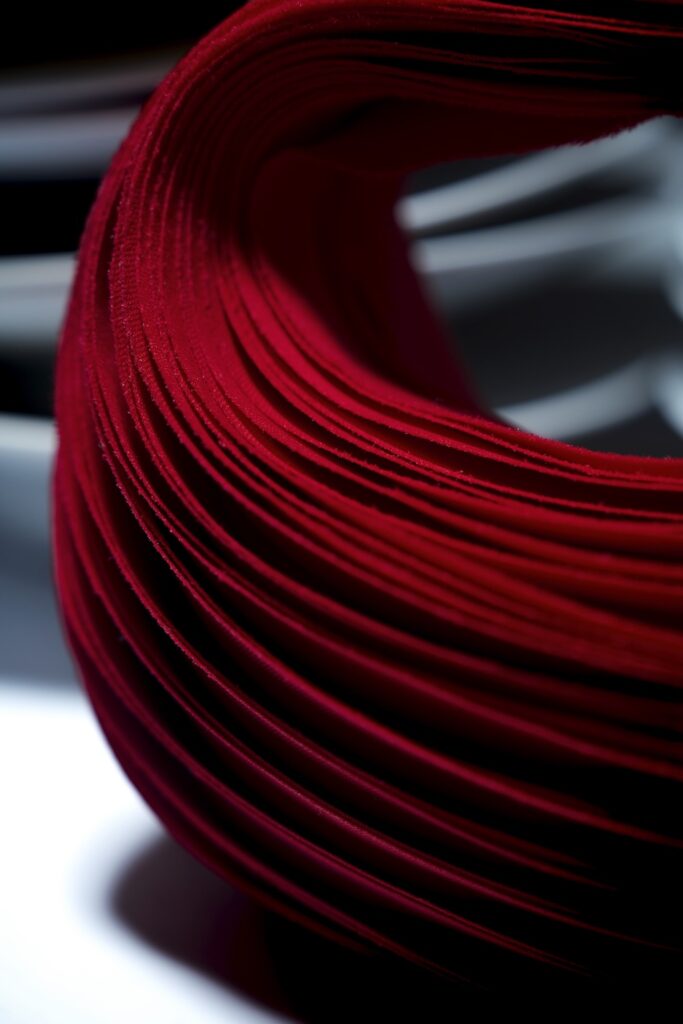
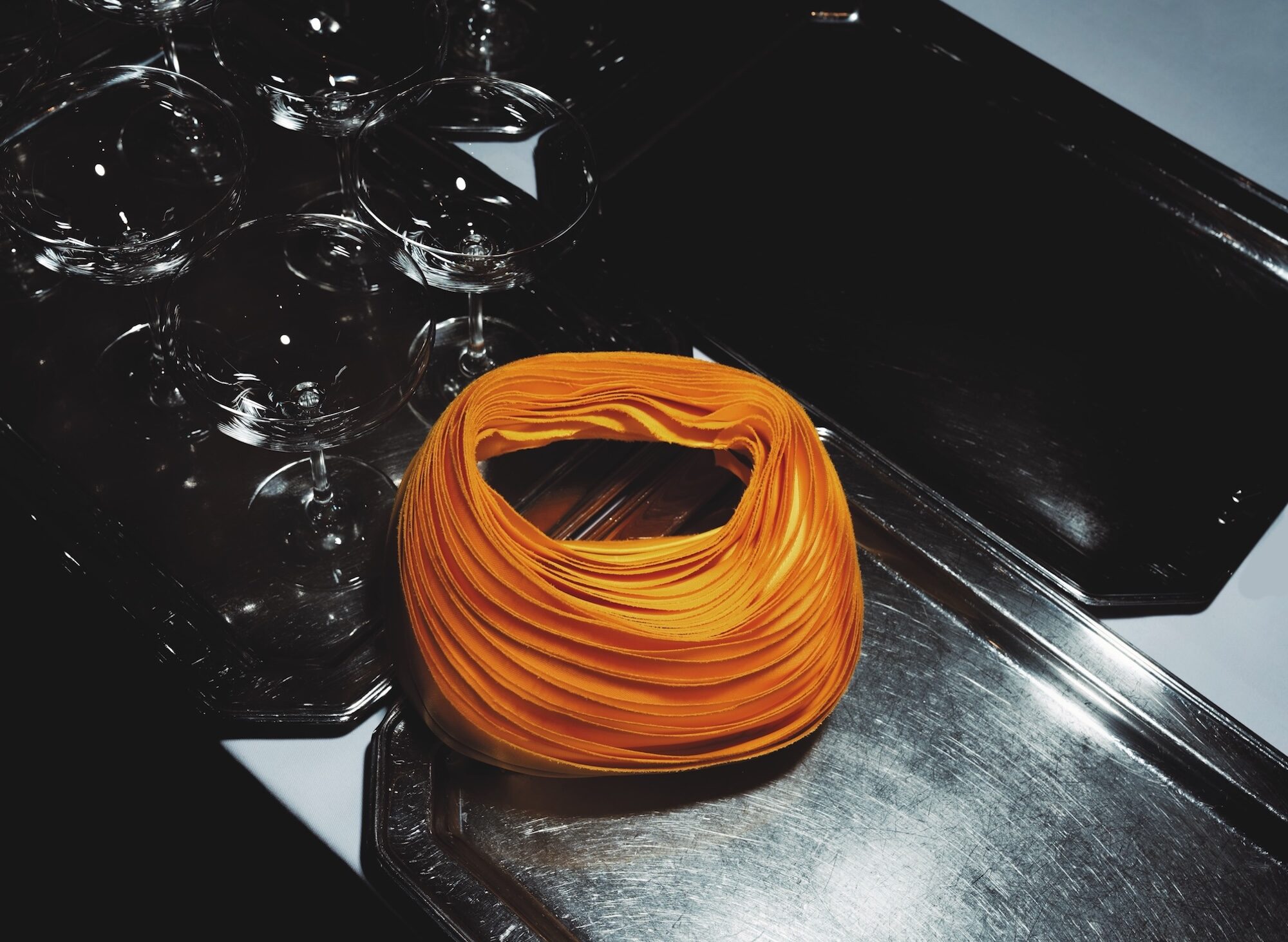
“What’s always inspired me about being based here is the duality – traditional craftsmanship and a strong connection to heritage exists with bold architecture and a real sense of futurism”
Yasmin Mansour
Amir al Kasm
Syrian-born, Beirut-based designer Amir Al Kasm is known for couture that thrives on contradictions. Since graduating from Creative Space Beirut, and winning the 2023 FTA Eveningwear Prize, he has carved out a distinctive identity that balances exquisite evening and bridal wear with upcycled ready-to-wear pieces.
“When I began in the fashion world I was just 17 years old and trying to find my way. Creative Space Beirut saw potential in me and gave me the space to grow. Even while I was studying, I had the opportunity to work with brands that had developed out of the school, such as Roni Helou, and that experience shaped me a lot.
“After graduating, I worked with Armenian Lebanese designer Krikor Jabotian and began to develop my own small collections. I had no financial support and so had to work for other designers to sustain my brand. When I won the FTA Prize, it was huge for me. The grant gave me the financial breathing room I needed to focus on my own label, it opened doors to incredible connections and gave me new confidence. Harrods in London took part of the winning collection, and Salma Hayek started following me on Instagram. The fashion industry is huge and competitive, so it was a big step for me to take.
“My work is about contradictions – boldness and softness, light and dark – and every piece has its own story. I want to design couture pieces that make women feel powerful and feminine, and that’s why I love to create evening and bridal wear in particular. I have also done capsule collections with a focus on upcycling – making jackets from thrift-store trousers and blazers. I recently collaborated with the Piaff Boutique in Beirut, where I worked with students to teach them how to upcycle archival pieces and give them new forms. All of this magic is still happening in my home atelier – it’s a small studio but we’re doing big work in it.
“There’s a spotlight on Arab fashion designers right now – you see names such as Mohammed Ashi of Ashi Studio reaching incredible audiences. It feels like real progress, because for a while, Arab designers had lost that global visibility. Now we’re back on track, and I hope my work can be part of that. My goal is to share the cultural heritage and background that shape my designs with the world, and to contribute to showing how much Arab fashion has to offer.”
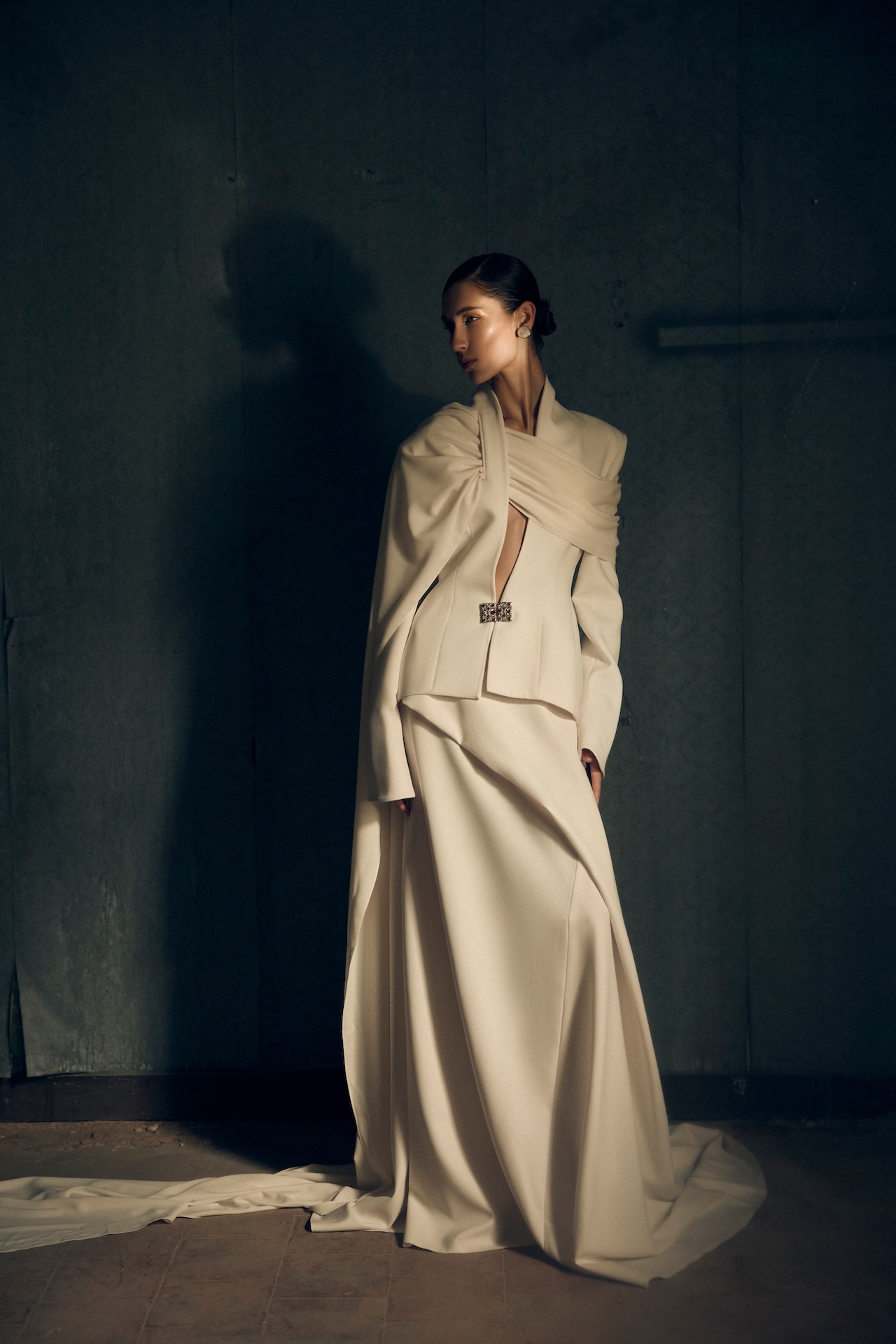
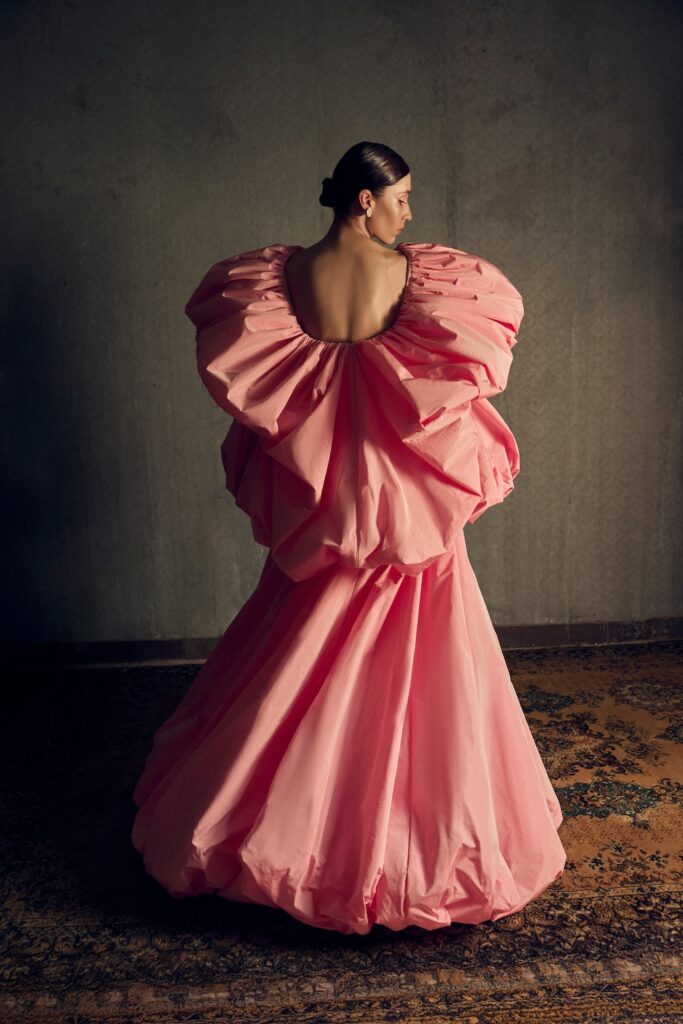
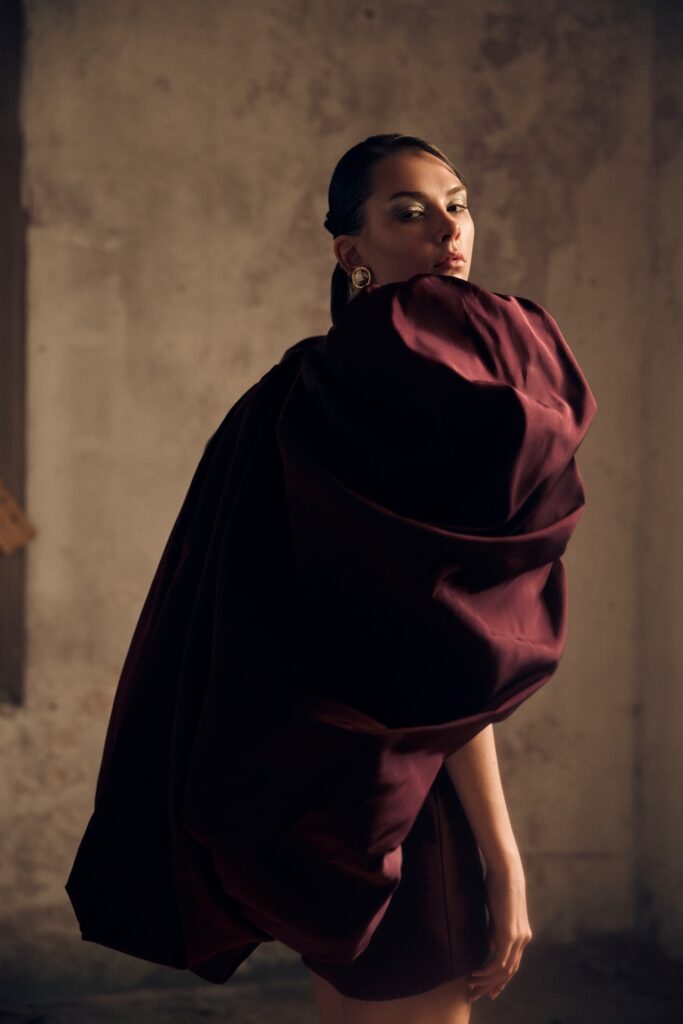
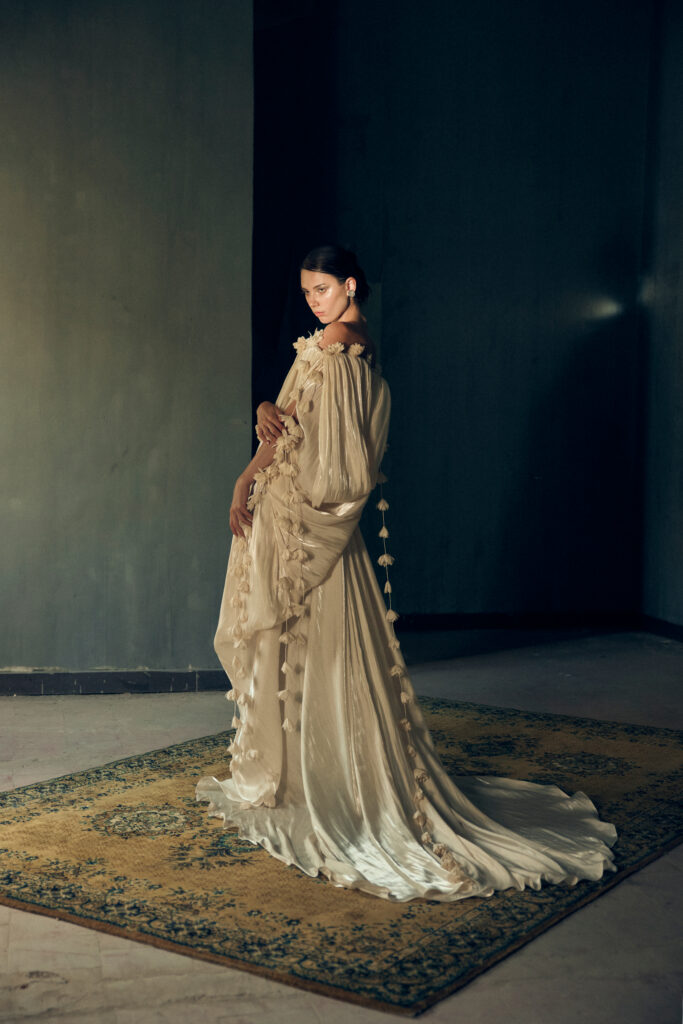
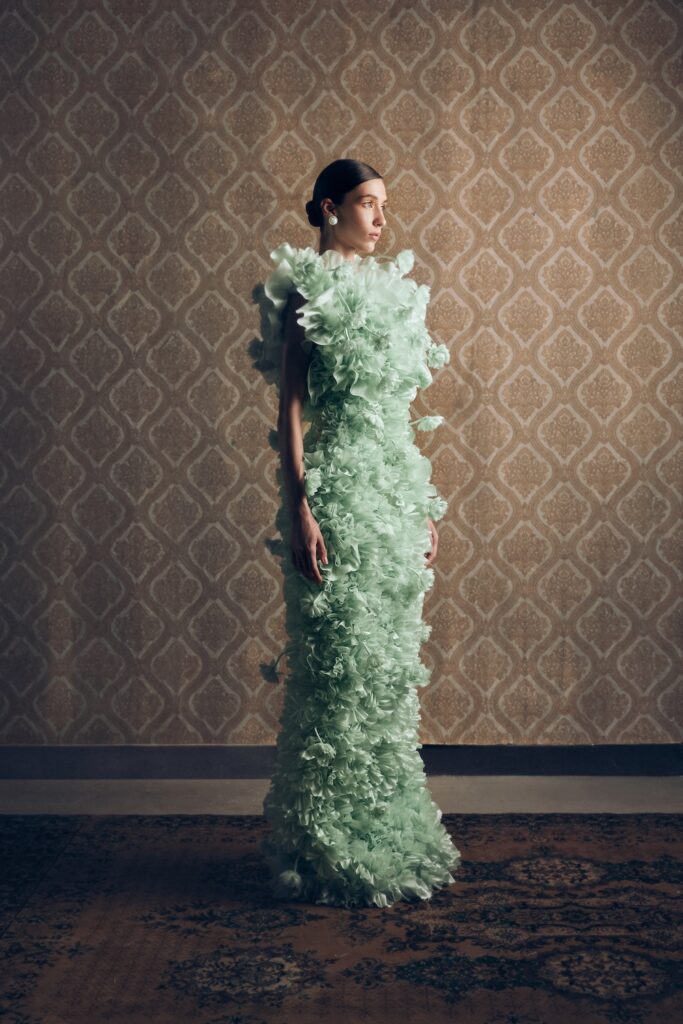
“My goal is to share the cultural heritage that shapes my designs, and to show how much Arab fashion has to offer”
Amir Al Kasm
Roni Helou
Roni Helou is a Lebanese designer whose eponymous label blends bold storytelling with a strong commitment to sustainability and social impact. A graduate of Creative Space Beirut and the inaugural FTA Ready-to-Wear winner in 2019, he continues to challenge fashion norms, while nurturing the next generation of Arab creatives.
“Winning the FTA Ready-to-Wear Prize was very exciting. I had only established my brand two years earlier and was new to the industry. It felt surreal to be in a room with people I’d never dreamed I would meet, and I’m still in touch with a lot of the judges and other winners today. Those relationships are one of the best things to come from the win.
“I decided to leave Lebanon after the Port of Beirut explosion in 2020, as I needed a fresh start. I reached out to Her Excellency Sheikha al-Mayassa through FTA to propose moving to Doha, and she was very supportive. Shortly after I arrived, I was offered a showroom at Liwan and I’m now deeply involved in several creative hubs in Doha.
“While working with M7, I developed a programme in partnership with Printemps Doha that provides mentorship to emerging Qatari brands. I also created a programme designed to train and support designers until they are ready for M7 to sponsor their participation in international fashion weeks. Currently, I’m building the fashion department for a vocational design school set to open in Doha in the coming years. In developing this programme, I drew personal inspiration from Creative Space Beirut. Three of its graduates – myself, Amir Al Kasm and Ahmed Amer – have won FTA prizes.
“Living in Qatar has given me a new perspective. Today, I don’t just introduce myself as a fashion designer. I see myself more as an entrepreneur and also a consultant for young designers, offering them the kind of support I didn’t have when I started out. The Arab world is huge and diverse and we are seeing a growing celebration of cultural individuality within the region. Fashion is a gateway to culture, and can connect people in a powerful way. I believe we’re at the start of a really exciting movement.”
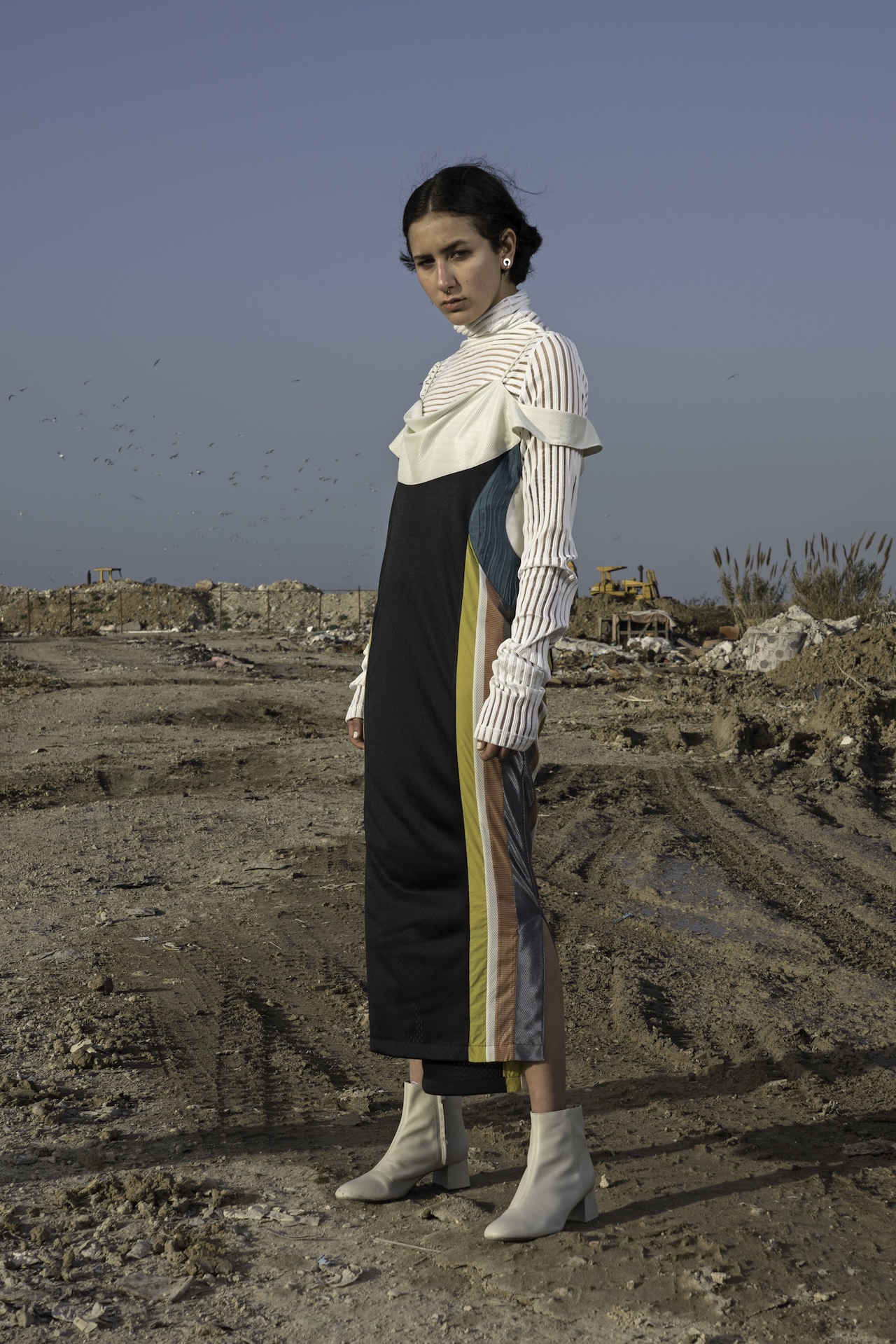
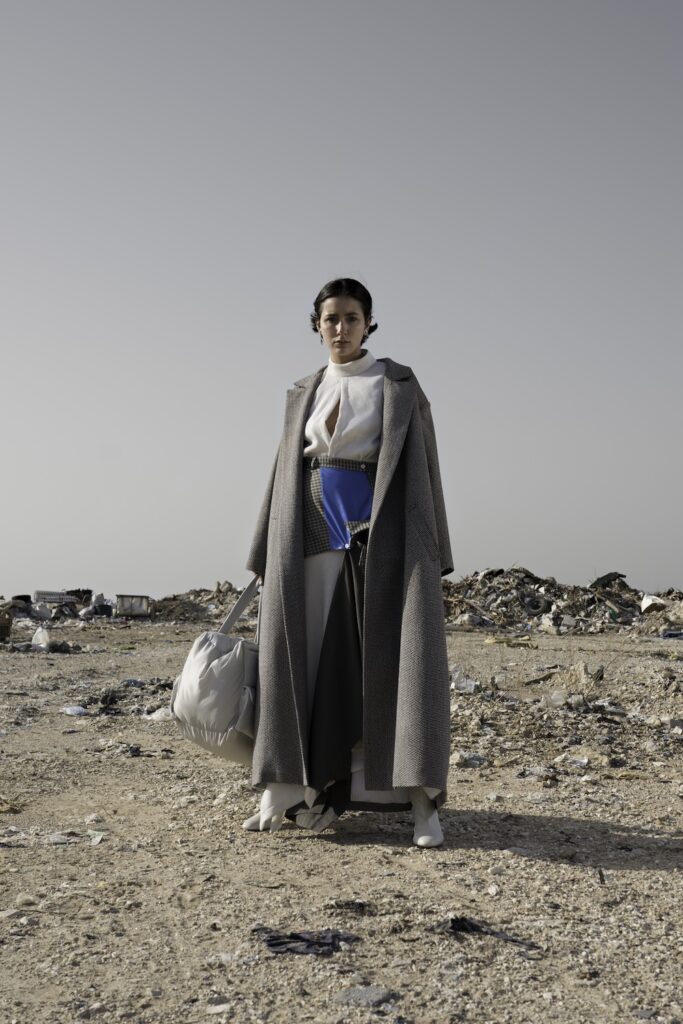
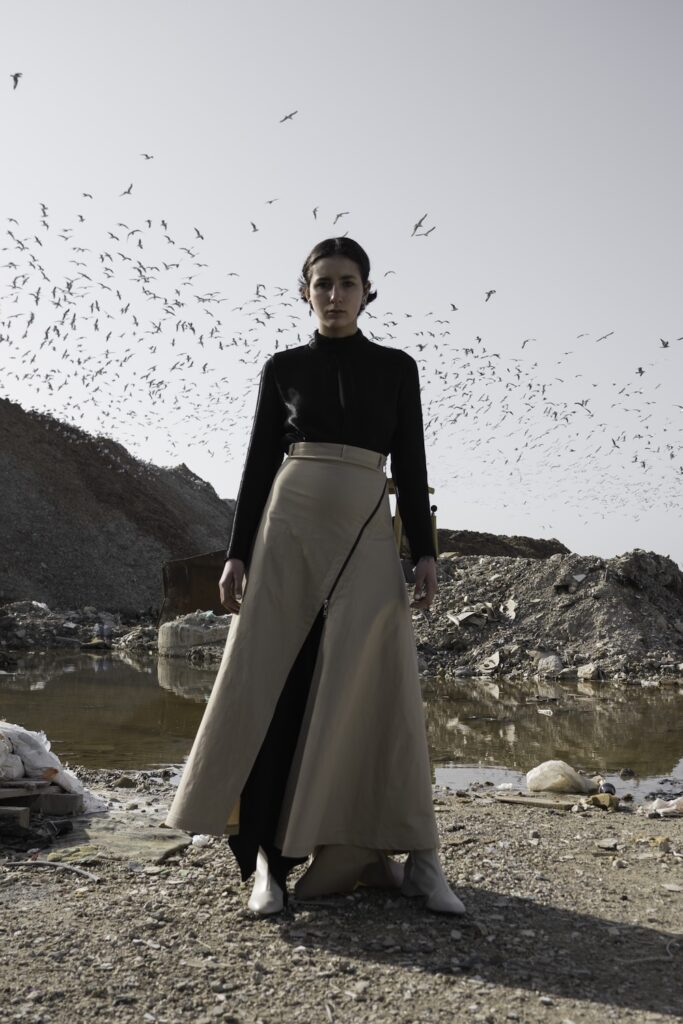
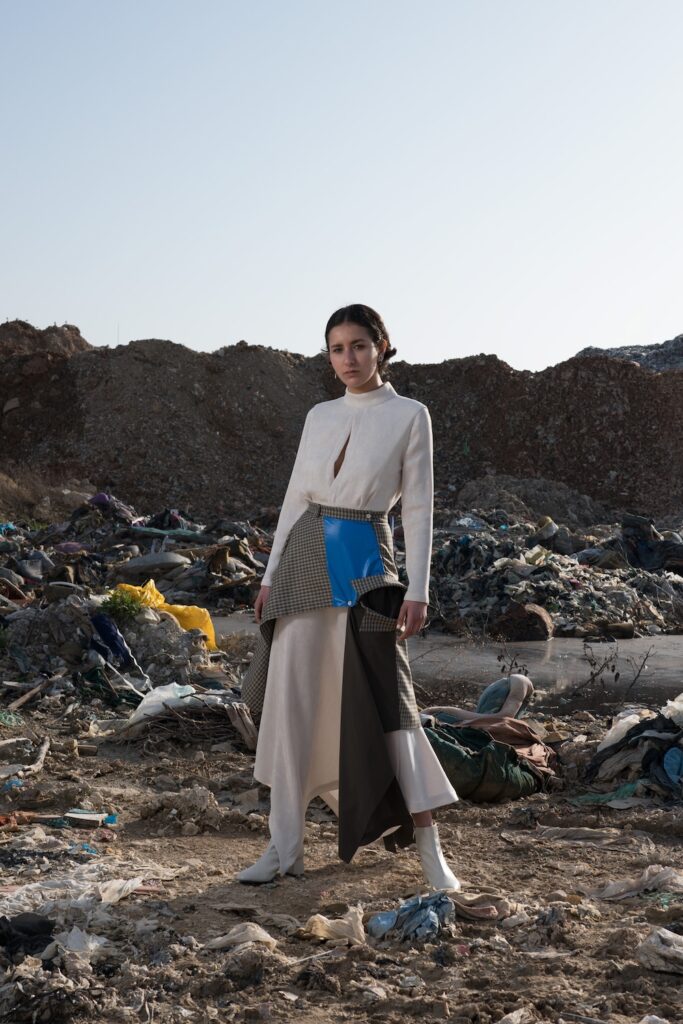
“Fashion is a gateway to culture, and can connect people in a powerful way”
Roni Helou

